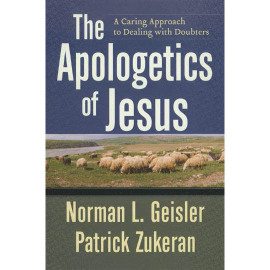Rusty Wright responds to the 2002 news about the ossuary (bone box) with the very intriguing and unusual inscription “James, son of Joseph, brother of Jesus.”
Rarely these days does Israel make headlines for something other than conflict. But a recent (Fall 2002) announcement about an ancient artifact there attracted wide attention.
Biblical Archaeology Review revealed that a stone ossuary (bone receptacle) has an inscription reading “James, son of Joseph, brother of Jesus.” If authentic, this would be the earliest archaeological find that corroborates biblical references to Jesus.
Andre Lemaire, a French expert on ancient writings from the Sorbonne, suspected the ossuary’s significance when he saw it in the owner’s private collection.
Time magazine claims that if the ossuary is authentic and the inscription refers to the biblical James, “this would be the most important discovery in the history of New Testament archaeology.”
The New Testament in several places refers to James, Jesus’ brother. In Matthew 13:53-55, citizens of Jesus’ hometown Nazareth mention “His brother…James….” Paul, an early expositor of the faith, refers to “James, the Lord’s brother” (Galatians 1:19), a leader of Jerusalem’s Christians.
Is the ossuary a first-century antiquity or a later forgery? The Geological Survey of Israel subjected it to rigorous tests. It is made of Jerusalem-area limestone quarried from the first or second century A.D. Its patina (sheen) bears evidence of centuries in a cave and shows no evidence of modern chemicals or disruption. Survey scientists conclude it’s not a later forgery.
Paleography, the science of ancient writings, supports the early date. Johns Hopkins paleographer P. Kyle McCarter says the “script is consistent with a date in the middle of the first century A.D.” Josephus, a first century Jewish historian, put James’ death in 62 A.D.
Does the inscription refer to the biblical James, Joseph and Jesus? Lemaire’s statistical analysis argues that in mid-first-century Jerusalem “there were probably about 20 people who could be called ‘James son of Joseph brother of Jesus.'”
Only one other known ancient Jewish ossuary inscription mentions a brother. Was this Jesus, James’ brother, mentioned because he was well known? Lemaire sees a 90 percent chance that the ossuary’s James is the biblical brother of Jesus.
The case has critics. We know nothing of the ossuary’s original location; evidence might have been compromised. At least one scholar disagrees with Lemaire’s paleographic dating of the box. Some question his statistical basis for eliminating other possible Jameses in Jerusalem and feel that Lemaire overstates his case. But at least one feels he understates it.
Christianity, Judaism and Islam claim historical foundations. Historical and archaeological confirmation — or contradiction — of their writings affects their credibility.
Christian faith does not stand or fall on the authenticity of this ossuary. But if genuine, the ossuary supports the conclusion of the late, renowned Jewish archaeologist Nelson Glueck, who asserted “the almost incredibly accurate historical memory of the Bible, and particularly so when it is fortified by archaeological fact.”
Duke University Judaic Studies professor Eric Meyers, while advising caution on the James ossuary, feels “there is a strong possibility that the artifact is what Lemaire says it is: the oldest extra-biblical archaeological evidence of Jesus.”
© 2002 Rusty Wright. Used by permission. All rights reserved.








